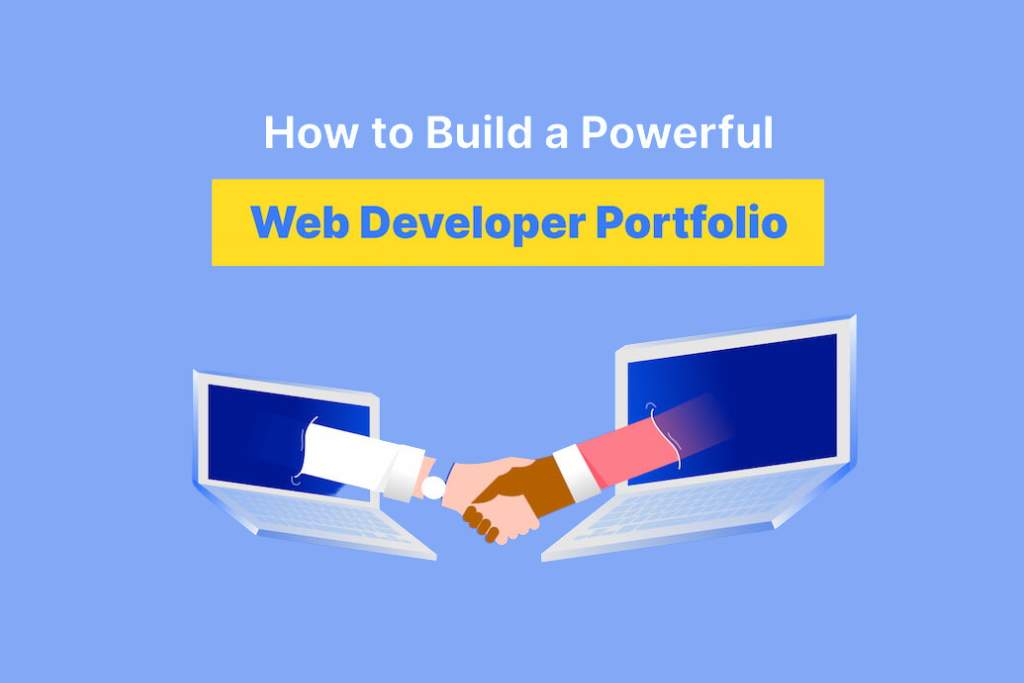Why a portfolio is important for freelance web developers
Welcome to the world of freelance web development, where your skills and creativity can take center stage! As a freelancer, building an impressive portfolio is essential for showcasing your talent and attracting potential clients. With countless websites vying for attention in today’s digital landscape, having a standout portfolio sets you apart from the competition.
In this blog post, we’ll guide you through the process of creating an impressive portfolio as a freelance web developer. From identifying your niche to choosing the right platform and designing an eye-catching layout, we’ve got you covered. So, let’s dive in and unlock the secrets to crafting a winning portfolio that will leave clients clamoring for your expertise!
Identifying your niche and target audience
Identifying your niche and target audience is a crucial step in building an impressive portfolio as a freelance web developer. It’s important to clearly understand the specific area you want to specialize in, whether it’s e-commerce websites, responsive design, or custom WordPress development.
By narrowing down your focus, you can position yourself as an expert in that particular niche. This will not only help you stand out from the competition but also attract clients who are specifically looking for someone with your skill set.

To identify your niche, start by evaluating your strengths and passions. What aspects of web development do you excel at? What types of projects excite you the most? By aligning your skills with your interests, you’ll be able to find a niche that truly resonates with you.
Once you’ve identified your niche, it’s time to define your target audience. Who are the people or businesses that would benefit from working with someone like you? Consider factors such as industry, size of company, location, and budget.
Understanding who your ideal clients are will allow you to tailor your portfolio to their needs and preferences. You can showcase relevant projects and highlight specific solutions that cater to their industry or goals.
Remember, finding success as a freelance web developer is not just about being skilled technically; it’s about effectively communicating how you can solve problems for potential clients within a specific niche market. So take the time to identify both your niche and target audience; it will make all the difference in building an impressive portfolio!
Highlighting your skills and services
Highlighting your skills and services is crucial when building an impressive portfolio as a freelance web developer. This is the section where you can showcase your expertise and demonstrate what sets you apart from other developers in the industry.
Start by identifying the specific skills that make you valuable to potential clients. Are you proficient in HTML, CSS, JavaScript, or maybe even PHP? Highlight these technical abilities and provide examples of projects where you have successfully utilized them.

In addition to technical skills, emphasize any additional qualifications or certifications that enhance your credibility as a web developer. Have you completed any relevant courses or obtained specialized training? Include this information to show potential clients that you are committed to continuous learning and staying up-to-date with current trends in web development.
Furthermore, it’s essential to clearly outline the services you offer as a freelance web developer. Do you specialize in front-end development, back-end development, or both? Clearly define what types of websites or applications you can create for clients. Additionally, if there are any particular industries or niches where your expertise lies (e.g., e-commerce sites), highlight those specialties as well.
Remember to communicate not only what services you provide but also how these services benefit clients. Explain how your unique skill set allows businesses to improve their online presence, increase user engagement, optimize website performance, or achieve their specific goals through effective web development solutions.
By effectively highlighting your skills and services in your portfolio, potential clients will be able to see why they should choose you as their freelance web developer!
Choosing the right platform for your portfolio
Choosing the right platform for your portfolio is crucial to showcasing your skills and attracting potential clients. With so many options available, it’s important to consider factors such as customization options, ease of use, and audience reach.
One popular platform for freelance web developers is WordPress. It offers a wide range of themes and plugins that allow you to create a unique and professional-looking portfolio. Plus, its user-friendly interface makes it easy to update and maintain your site.

Another option is Squarespace, known for its sleek templates and intuitive design tools. It’s a great choice if you want a visually stunning portfolio without spending too much time on customization.
If you prefer a more hands-on approach, coding your own website using HTML, CSS, and JavaScript can give you complete control over the design and functionality. This option may require more technical expertise but allows for maximum flexibility.
Don’t forget about industry-specific platforms like Behance or Dribbble if you specialize in graphic design or UX/UI development. These platforms attract creative professionals who are actively looking for talent in these specific areas.
The right platform will depend on your personal preferences and goals as a freelancer. Take some time to research different options and choose one that aligns with your brand identity while effectively showcasing your work.
Designing an eye-catching layout
Designing an eye-catching layout is crucial when building an impressive portfolio as a freelance web developer. Your portfolio should showcase your technical skills and visually captivate potential clients and employers.
One important aspect of designing a compelling layout is to keep it clean and organized. Avoid cluttering the page with too much information or elements that can distract from your work. Utilize white space effectively to create a sense of balance and allow your projects to shine.
Another key consideration is using consistent branding throughout your portfolio. Choose colors, fonts, and graphics that represent your personal brand and use them consistently across all pages. This will help create a cohesive look and feel, making it easier for visitors to navigate through your portfolio.

Incorporating strong visuals, such as high-quality images or screenshots of your projects, is essential to grabbing attention. Make sure the images are clear, well-lit, and properly showcase the design aspects you want to highlight.
Additionally, pay attention to typography choices when designing your layout. Select fonts that are legible on different devices and sizes without sacrificing style or uniqueness. Consistency in font usage within headings, body text, and captions will contribute to a polished overall appearance.
Consider incorporating interactive elements into the layout if appropriate for showcasing certain projects. This could include animations or interactive prototypes that demonstrate functionality or user experience aspects of your work.
By giving careful thought to these design considerations while creating your web development portfolio’s layout, you’ll enhance its visual appeal and make a lasting impression on potential clients seeking freelance web developers like yourself!
Including case studies and testimonials
Case studies and testimonials are powerful tools that can showcase your skills as a freelance web developer. They provide concrete evidence of your abilities and help potential clients understand the value you can bring to their projects.
When including case studies in your portfolio, choose projects that highlight different aspects of your expertise. Describe the challenges you faced, the strategies you used to overcome them, and the results you achieved for your clients. Use visuals such as screenshots or before-and-after images to make it more engaging.

Testimonials from satisfied clients add credibility to your portfolio. Reach out to past clients and ask them for feedback on their experience working with you. Include snippets of these testimonials throughout your portfolio, highlighting specific strengths or positive experiences they had while collaborating with you.
Don’t be afraid to show off any awards or recognition you have received for your work. This further establishes trust with potential clients by demonstrating that others have recognized and appreciated your talents.
By including case studies and testimonials in your portfolio, prospective clients can see tangible proof of what you are capable of achieving. It helps build trust and confidence in hiring you as their freelance web developer.
Updating and maintaining your portfolio
Updating and maintaining your portfolio is crucial for freelance web developers to stay relevant and showcase their latest work. With the fast-paced nature of the industry, it’s important to regularly update your portfolio with new projects, skills, and achievements.
One way to keep your portfolio up-to-date is by adding new case studies or client testimonials. These provide tangible evidence of your skills and expertise, giving potential clients a more profound understanding of what you can offer. Additionally, including links to live websites or interactive demos can help demonstrate the functionality of your work.

Another aspect of maintaining your portfolio is ensuring that all information is accurate and current. Make sure to update contact details, pricing information, and any other relevant details that may have changed since you last updated your portfolio.
In addition to updating content, it’s also essential to periodically review the design and layout of your portfolio. Ensure that it remains visually appealing and user-friendly so that visitors can easily navigate through your projects. Consider incorporating trends in web design while still maintaining a unique style that represents you as a freelancer.
Don’t forget about utilizing social media platforms like LinkedIn or Behance to promote updates on your portfolio. Share new projects or blog posts related to web development regularly on these platforms to increase visibility among potential clients.
Remember, an impressive portfolio requires consistent effort in terms of updating content, reviewing design elements, and actively promoting yourself through various channels. By doing so, you’ll be able to attract more clients and stand out as a successful freelance web developer!
Utilizing social media to showcase your work
In today’s digital age, social media has become an integral part of our lives. As a freelance web developer, it is crucial to leverage the power of social media platforms to showcase your work and attract potential clients.
Platforms like Instagram, Twitter, LinkedIn, and Facebook can serve as powerful tools for promoting your portfolio. Here are some tips on how you can effectively utilize social media:
- Choose the right platforms: Identify which platforms align with your target audience and focus on building a strong presence there. For example, if you specialize in creating websites for small businesses or startups, LinkedIn and Facebook might be more suitable than Instagram or Twitter.
- Share snippets of your projects: Take advantage of visual content by posting screenshots or videos that highlight key features of your completed projects. This will give potential clients a glimpse into what you can offer them.
- Engage with relevant communities. Join groups or communities that cater to web development professionals or those interested in website design. Participate in discussions, share valuable insights, and establish yourself as an expert in the field.
- Collaborate with influencers: Collaborating with influencers who have a large following within your niche can help boost visibility for both parties involved. Reach out to influential bloggers or industry experts who may be interested in featuring your work.
- Ask for testimonials and reviews. Encourage satisfied clients to leave reviews on platforms such as LinkedIn recommendations or Google My Business listings. Positive feedback adds credibility and builds trust among potential clients.
6. Maintain consistency across channels: Ensure consistent branding across all social media channels by using similar profile pictures, cover photos, bios and descriptions, color schemes, etc.
Remember that while utilizing social media is essential for showcasing your work as a freelance web developer, it should not replace having an actual portfolio website itself! Your website should remain the primary hub where visitors can find comprehensive information about you and your services.
By effectively utilizing social media platforms with a well-designed portfolio







